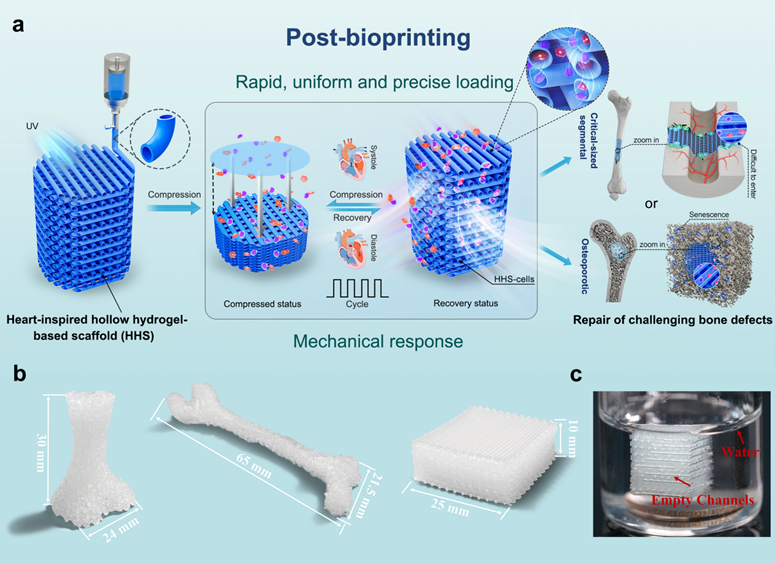Researchers Develop Novel Post-bioprinting Strategy for Reconstruction of Challenging Bone Defects
Date:03-09-2024 | 【Print】 【close】
A research team led by Prof. RUAN Changshun from the Shenzhen Institute of Advanced Technology (SIAT) of the Chinese Academy of Sciences has proposed a mechanical-assisted post-bioprinting strategy for challenging bone defects repair.
The study was published in Nature Communications on Apr. 26.
Bioprinting, capable of synchronous deposition of cells and biomaterials, bring a promising avenue for repair of challenging bone defects. However, it remains challenge to maintain cell viability during the bioprinting process and ameliorate mechanical stability of bioprinted cell-laden constructs.
To address this issue, the researchers developed a type ofheart-inspired hollow hydrogel-based scaffold (HHS) that can reversibly respond to external mechanical stimulations are used for active cell loading in a rapid, uniform, precise and friendly manner, similar to that the cardiac impulse attributes to systole and diastole.
“On basis of a customized combination of gelatin methacryloyl, Laponite nanoclay, and N-acryloyl glycinamide, HHSs were first fabricated by one-step coaxial printing without any supporting materials,” said Prof. RUAN, “Our work successfully obtained HHSs with a height of 6 cm, almost reaching the critical size for human segmental bone defect”.
Owing to the tunable hollow structure of hybrid hydrogels, HHSs with attractive resilience, rapid shape recovery, and exceptional fatigue resistance are thoroughly demonstrated, which are the keys to success of this mechanical-assisted post-bioprinting strategy for loading cells.

Schematic illustration of the mechanical-assisted post-bioprinting strategy and fabrication of large-sized and sophisticated HHSs (Image by SIAT)
Media Contact: LU Qun
Email: qun.lu@siat.ac.cn
Download the attachment:
A mechanical-assisted post-bioprinting strategy for challenging bone defects repair